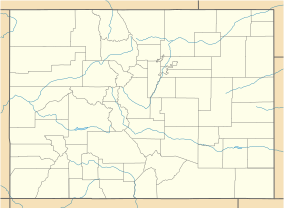Blanca Wildlife Habitat Area
| Blanca Wetlands | |
|---|---|
 |
|
| Location | San Luis Valley |
| Nearest city | Alamosa, Colorado |
| Coordinates | 37°32′52″N 105°41′14″W / 37.547844°N 105.687301°WCoordinates: 37°32′52″N 105°41′14″W / 37.547844°N 105.687301°W |
| Area | 10,000 acres (4,000 ha) |
| Established | 1965 |
| Governing body | Bureau of Land Management |
The Blanca Wetlands Area of Critical Environmental Concern, or Blanca Wildlife Habitat Area, is an area of the San Luis Valley in Colorado, United States, that serves as a refuge for birds, fish and other wildlife. It is about 11 miles (18 km) northeast of Alamosa on County Road 25. The wetlands had been completely destroyed by pumping and diversion of water for irrigation. Starting in 1965 the Bureau of Land Management began to restore them, and they have become an increasingly important ecological habitat for shorebirds, waterbirds and other wildlife and native plants.
The region has a cool, dry climate, with about 107 frost-free days each year. Temperatures range from −30 °F (−34 °C) to 85 °F (29 °C). Annual rainfall is about 7 inches (180 mm). The landscape is flat. Sand dunes carry sparse vegetation such as greasewood, rubber rabbit, salt grass, sandhill muhly and sand dropseed. The areas of dunes are intermingled with depressions and basins of historical playas. As late as the 1800s the area was wet, and the bones of fish show that some of the water was at least 12 feet (3.7 m) deep. Loss of water and destruction of wetlands occurred in the twentieth century due to pumping and redirecting surface water for irrigation. By the mid-1900s the basins had completely dried up, and the area became known as "Dry Lakes".
In 1965 the San Luis Resource Area of the Bureau of Land Management began a project to restore some of the dry playas in the San Luis Valley to their former condition as wetlands. The Blanca Wildlife Habitat Area covers almost 10,000 acres (4,000 ha) south of San Luis Lakes and near to the Great Sand Dunes National Park and Preserve. In contains about two hundred shallow basins floored by layers of sand and clay, holding wet meadows, salt flats, marshes and fresh water ponds. As of 1989 the Habitat Area contained 1,400 acres (570 ha) of pond and wetlands, with another 475 acres (192 ha) of historical wetlands to be developed Wetland vegetation in the playas includes softstem bulrush, cattail, alkaline bulrush, spike rush, sago pondweed, longleaf pondweed and watermilfoil. About 1,200 acres (490 ha) are watered each year, while other parts are deliberately allowed to dry up.
...
Wikipedia

